Overnight,Big hawk St. Louis Fed Chairman BradIn an interview with the media, he expressed his support for continuing rate hike to cope with persistent inflation. Inflation is falling, but not as fast as Wall Street expected, and he believes fears of a U.S. recession are overblown.
The implication is that,Inflationary pressures in the United States are still high, and rate hike still need to continue, while worries about economic recession have been exaggerated.
All kinds of signs are beginning to show that the market is rapidly reversing the expectation that the Federal Reserve will press the rate hike pause button in the second half of the year:
First of all,Futures market pricing shows that the probability of the Federal Reserve's rate hike rate hike of 25 basis points on May 3 has risen sharply from the previous 78% to 89%, and it is maintained at 81.6% today;
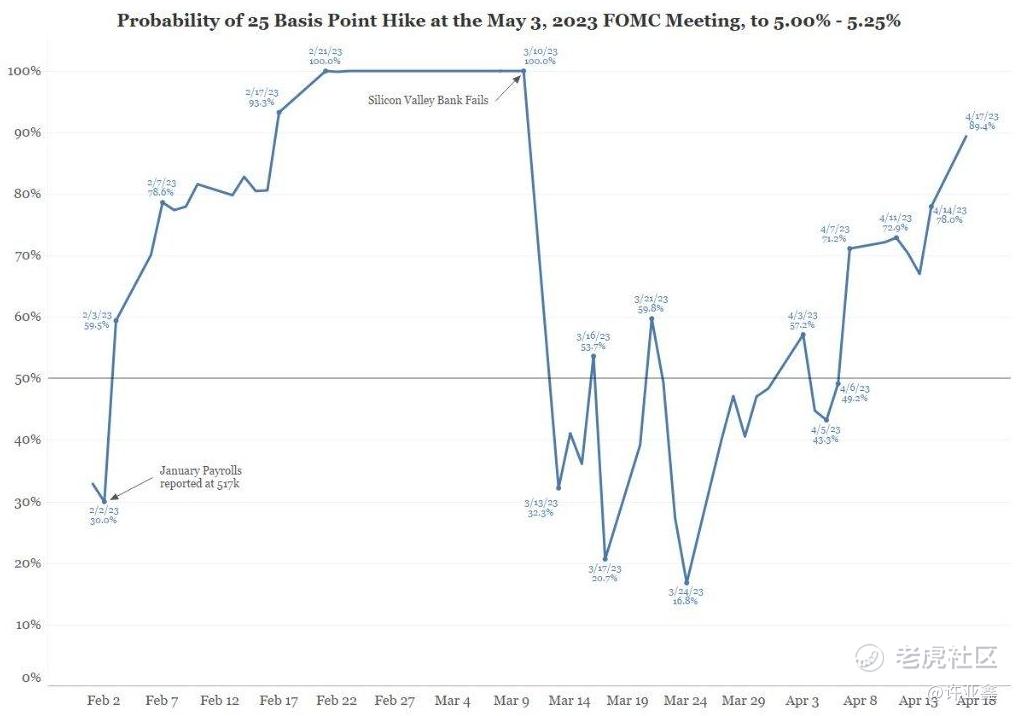
Secondly,The US short-term Treasury Bond interest rate soared, and the three-month US bond yield exceeded 5%, the first time in 16 years;
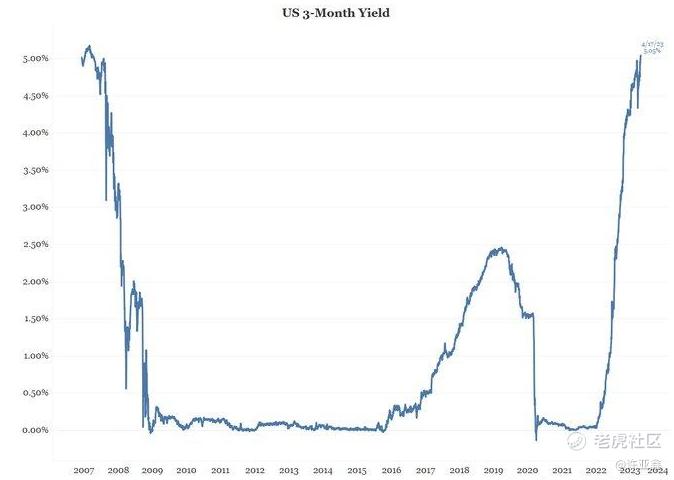
Finally,Before the release of non-agricultural data in March, the market expected the Fed's interest rate path to be the red line in the figure. Since then, the expectation has been continuously adjusted. On April 17, the market expected the Fed's interest rate path to be the green line in the figure, erasing more than half of the previous loose expectations.
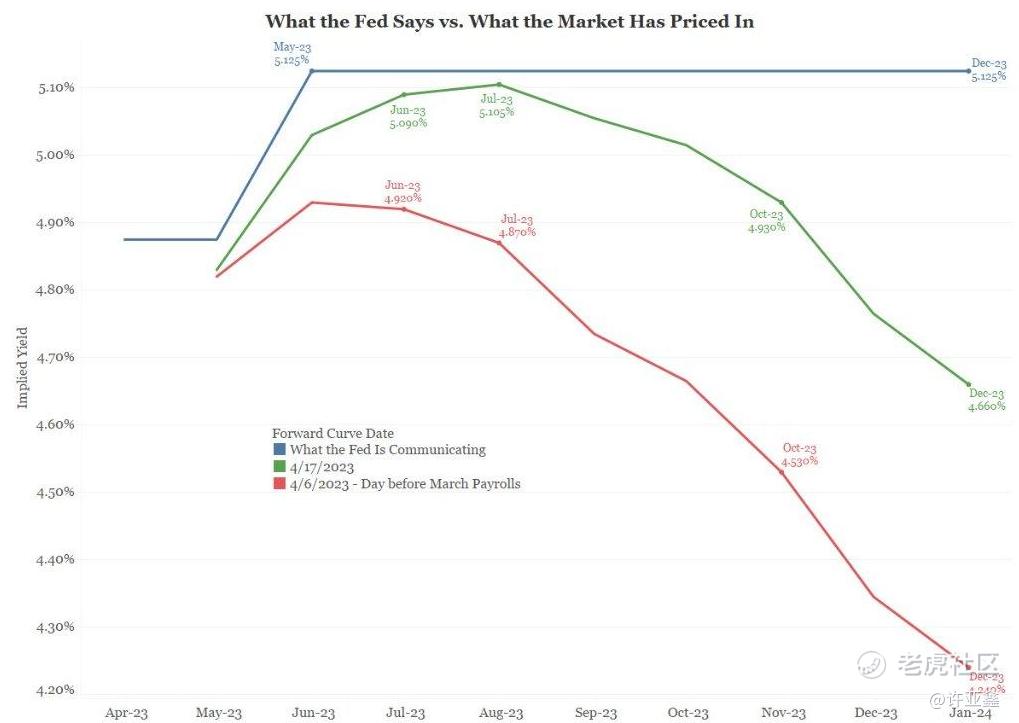
However, are investors really worried too much about the economic recession?
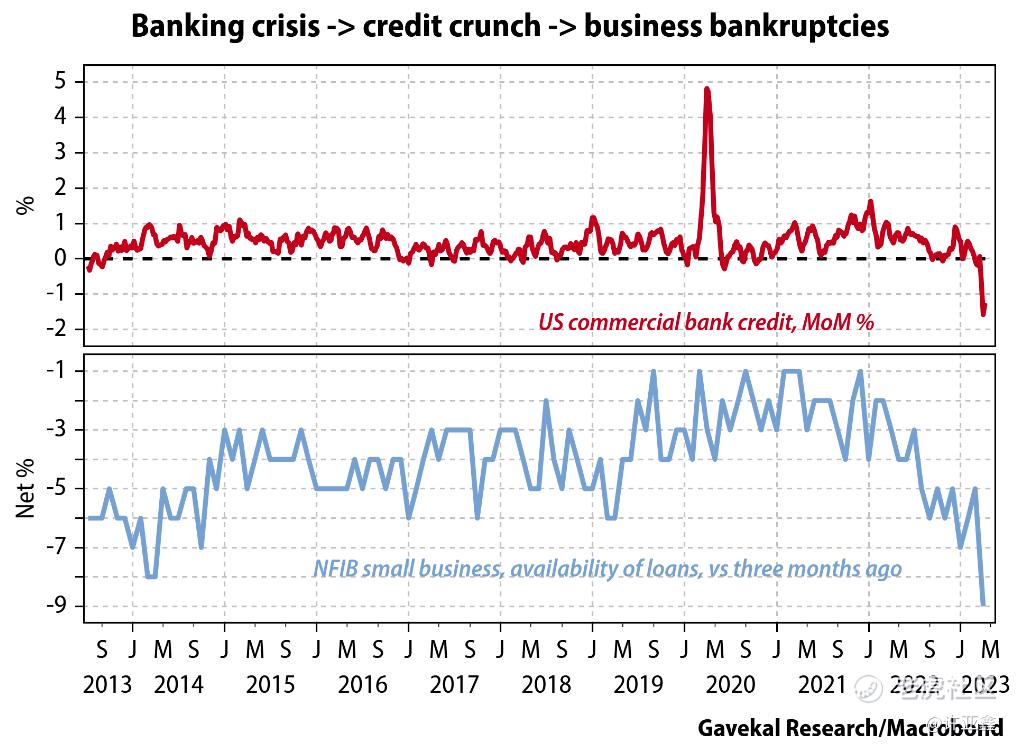
In March, with the collapse of Silicon Valley banks and signatory banks, the credit environment in the United States tightened sharply, commercial banks became cautious, and the availability of loans for small businesses dropped sharply. As shown in the above figure, the number of bankruptcy filings in the United States has surged.
A total of 42,368 new bankruptcy filings were filed last month, up 17% from a year earlier, according to U.S. bankruptcy court data, technology and service provider Epiq Bankruptcy,It is also the highest monthly bankruptcy filing since April 2021.
In addition, many Wall Street institutions have intensively warned before,American commercial real estate is the next thunder.Sure enough, a newly disclosed commercial mortgage-backed securities (CMBS) document showed that Brookfield's fund owed a total of $161.4 million in mortgages on its twelve office buildings.
The Brookfield fund default mainly involved office buildings in Washington, D.C., and among the 12 office buildings involved in the $161.4 million debt, the average occupancy rate last year was only 52%, far lower than the 79% when the debt was underwritten in 2018.
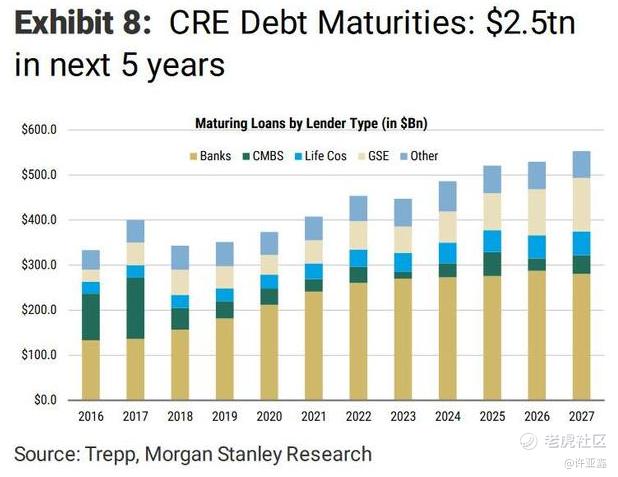
Perhaps Silicon Valley banks and signing banks are just a prelude, and this Brookfield thunder is also an episode, because Morgan Stanley and Trepp data show that there are still about 400 billion US dollars of commercial real estate (CRE) debts due this year, and CRE's lending environment will only become more severe.
Bank of America, Goldman Sachs, Morgan Stanley, JP Morgan Chase and Credit Suisse generally believed last month that,As the largest creditor of American commercial real estate, the crisis of domestic regional banks is spreading to the commercial real estate market. CMBS spreads have soared, and CMBS default rate has started to rise. At present, the most vulnerable office real estate may be the first to break out of crisis.
The scarier story is that,The US government is running out of cash reserves, and the debt ceiling crisis may be advanced to June.
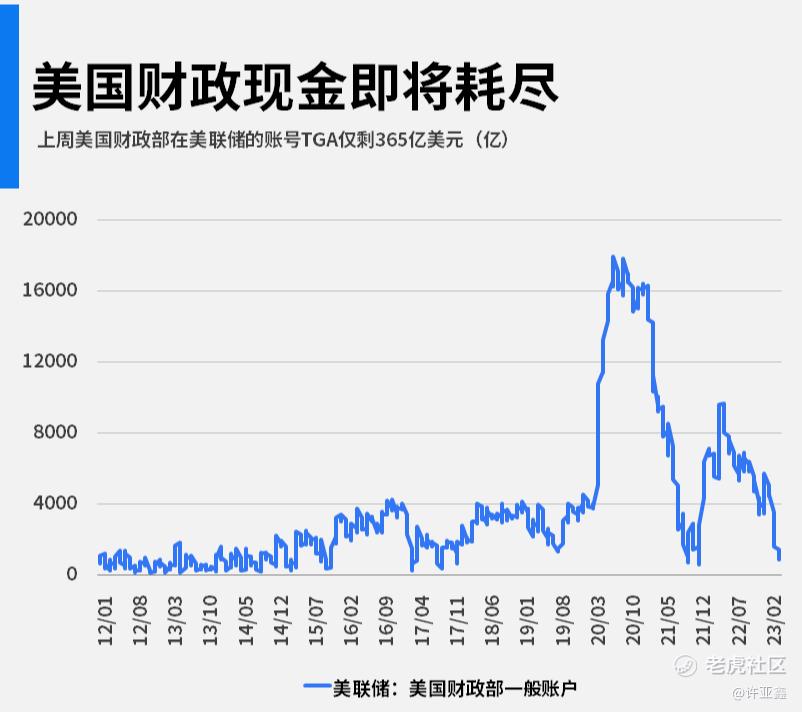
In order to avoid breaking the debt ceiling, the TGA of the US Treasury Department in the Federal Reserve has dropped from a high of 1 trillion last year to the lowest of 36.5 billion since May, which is close to exhaustion.
-END-
$E-mini Nasdaq 100 - main 2306(NQmain)$ $E-mini S&P 500 - main 2306(ESmain)$ $E-mini Dow Jones - main 2306(YMmain)$ $Gold - main 2306(GCmain)$ $WTI Crude Oil - main 2306(CLmain)$
Comments